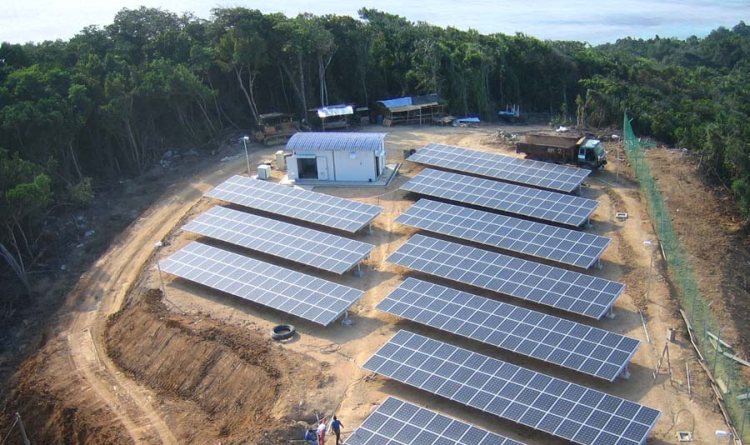C-DoT unveils solar-powered WiFi broadband for remote Indian villages & hilly terrains

Indian government had recently announced that it’ll provide access to broadband services in all 2.5 lakh villages of the country. In next two and half year period, the government expects to increase internet penetration from 300 million to 500 million.
As a part of this Digital India initiative, the Communication minister Ravi Shankar Prasad unveiled new broadband products including solar-powered WiFi systems, 100 Gbps optical fibre cable (OFC) link and C-DOT’s next generation network (NGN) in MTNL network.
The solar-powered WiFi system will operate in license-exempt bands of 2.4 and .8 GHz. The system is specially design to deal with inconsistent power supply in remote areas or in hilly terrains.
The WiFi system is developed by the Centre for Development of Telematics (C-DoT). It’s intended to attend the difficulties in creating connectivity with remote villages that are deprived of grid energy. Also, the solar-powered WiFi systems are expected to provide solution in hilly terrains and highways in dense vegetation and tunnels.
The telecom secretary also appealed to private sector to use and promote C-DoT’s broadband products.
C-Dot’s executive director Vipin Tyagi said that the aim is to empower the weaker strata of society and develop indigenous products to facilitate connectivity with telecom up gradation. He Included broadband connectivity in the list of basic needs after food, clothing, and shelter (Roti, Kapada, Makan).
India could have come up with such off-grid solutions to enhance access to electricity along with connectivity a long ago. However, the country could not get rid of corruption and old-school leaders could not keep up with 21st century world. It’s a great step to promote solar-powered WiFi solution for villages, but before that villagers will need food and other basic amenities. Over 50% of Indian population is deprived of quality life. Nearly 30% of total population is below poverty line.
Laying broadband network in all 2.5 lakh villages in just two and half years will cost billions of rupees to the government. However, what’s the use of broadband if the poor section of the society can’t afford even cheap electronic devices? How will they pay for broadband services when they struggle for their meals everyday.
Majority of Indian population is dependent on agriculture and live in rural areas. The farmers need advanced agricultural technologies, better seeds, irrigation facility, and reforms in government’s compensation policy in case of crop damage.
However, it can’t be denied that it’ll be a huge accomplishment for the government if it could really achieve this target in such a short period of time. The idea can change the life for a lot of people in tribal, remote areas of the nation. Solar-power is the best way to create self-sustainable, off-grid system to provide electricity in these regions.
Via: Economic Times